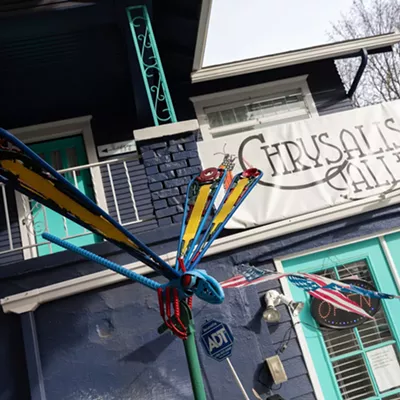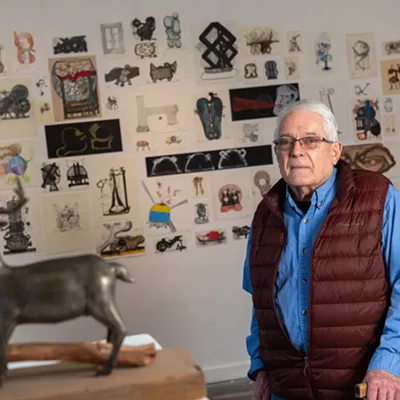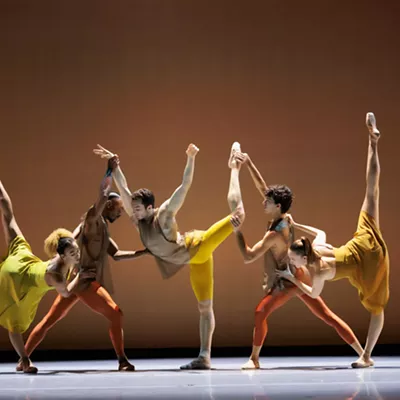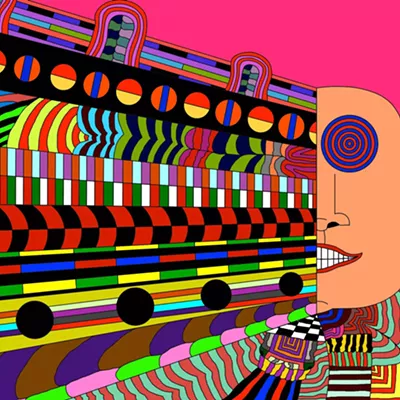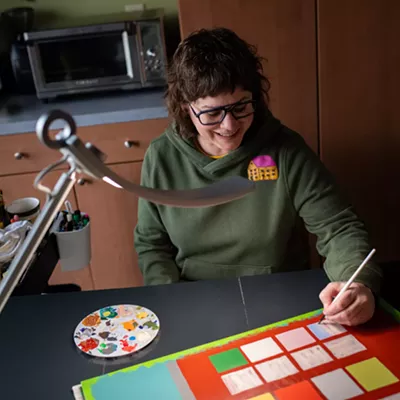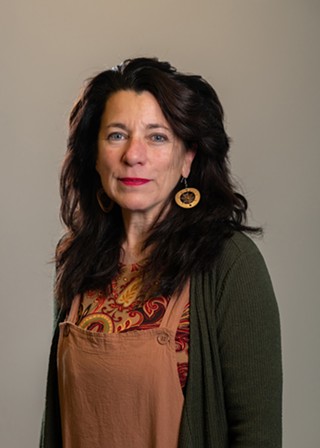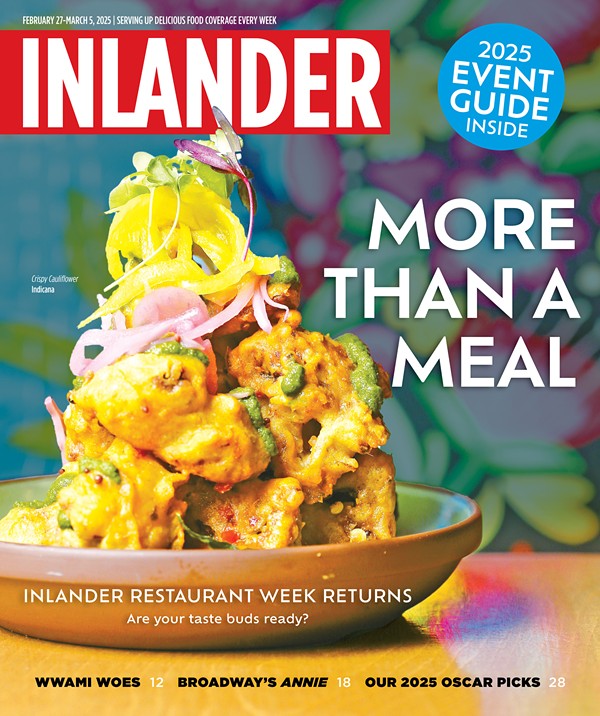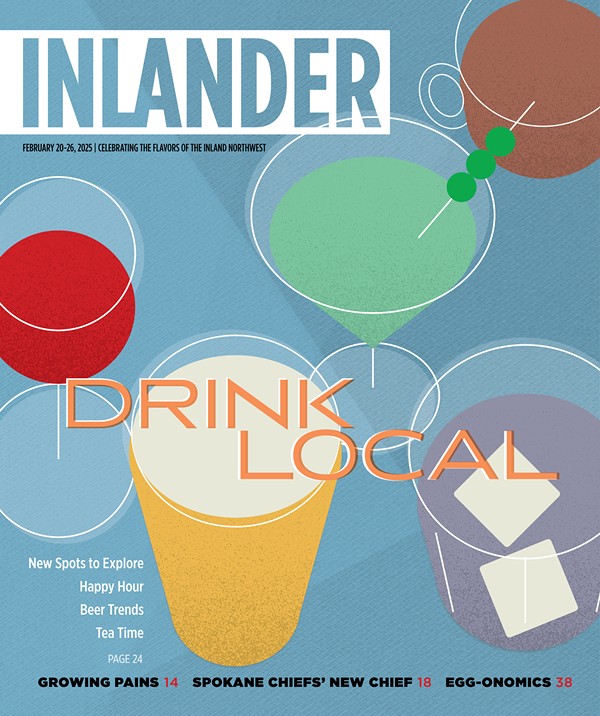It’s possible to miss someone you’ve never met. It’s possible to mourn someone you did not work with or study under or break bread with — if he was a man like Ruben Trejo.
When the call went out that we were doing a story on Ruben Trejo — in advance of a retrospective exhibition at the Northwest Museum of Arts and Culture — the e-mails came pouring in with stories to tell, and they were about more than just the artist Ruben Trejo.
“I think everyone had their slightly different perception of my dad that they were convinced was the ‘true Ruben,’” says Tanya Trejo. “In [my] truth, I think he was a bit of what each of us needed him to be and what he needed to be at the minute.”
Tanya was a baby when, in 1973, her father arrived in Cheney, with her and her twin sister Sonya, 3-year-old Eugenio, and Joanne Hammes, the mother of Trejo’s children and his life-partner. At age 36, he’d accepted a job at Eastern Washington University, in a region less ethnically diverse than his home of St. Paul, Minnesota.
Trejo wasted no time making an impression. Upon arriving at EWU, Trejo initiated a sit-in to drive home the need to support Chicano students, many of whom were working to become first-generation college graduates.
“Ruben was a committed educator,” says Barbara Loste, who teaches Spanish at Eastern. “In 1977, he co-founded EWU’s Chicano Education Program,” over the years welcoming hundreds of students from EWU, Gonzaga, Whitworth and community colleges to his home/studio, “fielding endless questions with provocative humor and contagious humility.”
One such student was Angel Olegario Luna, a 1996 Whitworth grad who came to EWU to study ceramics. “At that time, there were three students [Rick Trevino, José Rodriguez and himself] from similar cultural backgrounds as Ruben,” says Luna, whose father is from Mexico and mother from the Texas border. “[Trejo] taught us what it means to be a Chicano artist.”
Very little was off-limits for Trejo. “He had no fear of an idea,” says another former student, artist Ellen Picken. “He went with silliness, and never passed it off as facetious or cynical.”
Tinman Gallery owner Sue Bradley remembers that Trejo “wanted to make sure people thought about the role religion played in our lives and how it shaped symbols” — as in his Cruciform series, with blended Catholicism and social commentary about agriculture.
Social issues, politics, philosophy; movies, literature, music; art from the pre-Colombian era and works by contemporary Chicano artists; European and American modernists and the California Funk movement — Trejo’s interests varied as widely as his creativity.
“In addition to working at EWU as a sculptor in welding and casting,” says Lanny DeVuono, a former EWU art professor who’s now at the University of Colorado-Denver, Trejo “had a woodshop in his basement where he made assemblages from wood and appropriated objects that he collected — objects ranging from folk art to sale items he’d picked up at Value Village.”
Mexican folklore and history were favorite subjects, too, such as in the mural Trejo painted in his kitchen. “Parts of the mural were taken from Paradise of Tlaloc (the water god), one of the first murals in Teotihuacan,” explains DeVuono, “but Ruben — in typical fashion — updated it with images from popular culture and personal references to his family.”
Anyone who came to dinner went to go see it, adds DeVuono, which must have been quite a few people, because Trejo loved to cook. “He was a faithful and generous friend, cooking up for us great pots of tamales, beans, rice, quesadillas, mole with sauces from incendiary to thoughtfully mild,” says Roth, who met Trejo through his neighbors and good friends Claire and John Keeble.
To say, then, that Trejo was a good Chicano artist or that he only spoke to Latino issues is just wrong; his work blended personal narrative with universal motifs: culture, gender, politics, spirituality/faith/religion and history. “Ruben lived and cherished his Latino roots, and yet his work went beyond them,” says Loste. “Trejo was, simply put, a major 20th-century American artist.”
And his work was and is highly regarded. Trejo is represented in such prestigious places as the Smithsonian American Art Museum in Washington, D.C., and the National Museum of Mexican Art in Chicago. His work also was part of the Smithsonian’s traveling show, Arte de Otro Mexico, Art of the Other Mexico: Sources and Meanings, which toured Central America, Mexico and the United States for two years.
As respected as Trejo was and is, however, his work is not as well known as it could be. That’s partly because teaching, for him, was paramount. In addition, Spokane lacked (and still lacks) opportunities that larger urban areas provide.
“Trejo never actively or aggressively pursued a commercial career,” says Mitchell. “Throughout his life, he made only the work that interested him, disdaining the marketplace and the shallowness of commercial concerns.” And yet, observes Mitchell, “In this way, [Ruben] is perhaps our most original and authentic artist, an artist who left us with a singular and soulful body of work that never fails to move us, make us smile, and challenge us.”
It’s a body of work that is indeed beyond boundaries, including time, place and even physical existence. It’s the work of a lifetime — and the MAC’s exhibition, above all, is a celebration of Ruben Trejo’s life.
“Ruben Trejo: Beyond Boundaries / Aztlán y Más Allá,” opens on Saturday and runs through Nov. 13 at the MAC, 2316 W. First Ave. Museum hours: Wednesday-Saturday from 10 am-6 pm. Tickets: $7; $5, seniors and students; free, children 5 and younger. Visit northwestmuseum.org or call 456-3931.





